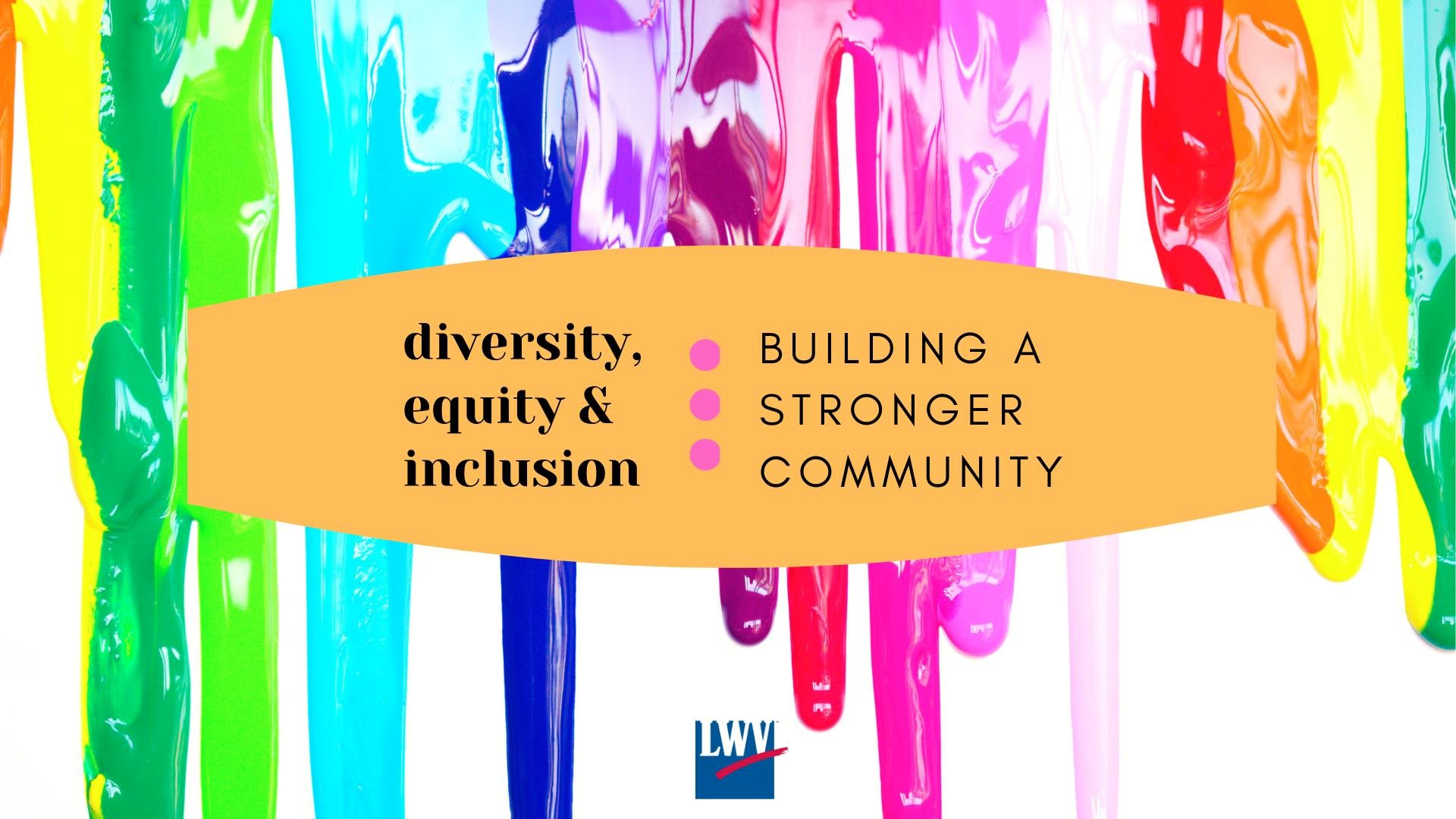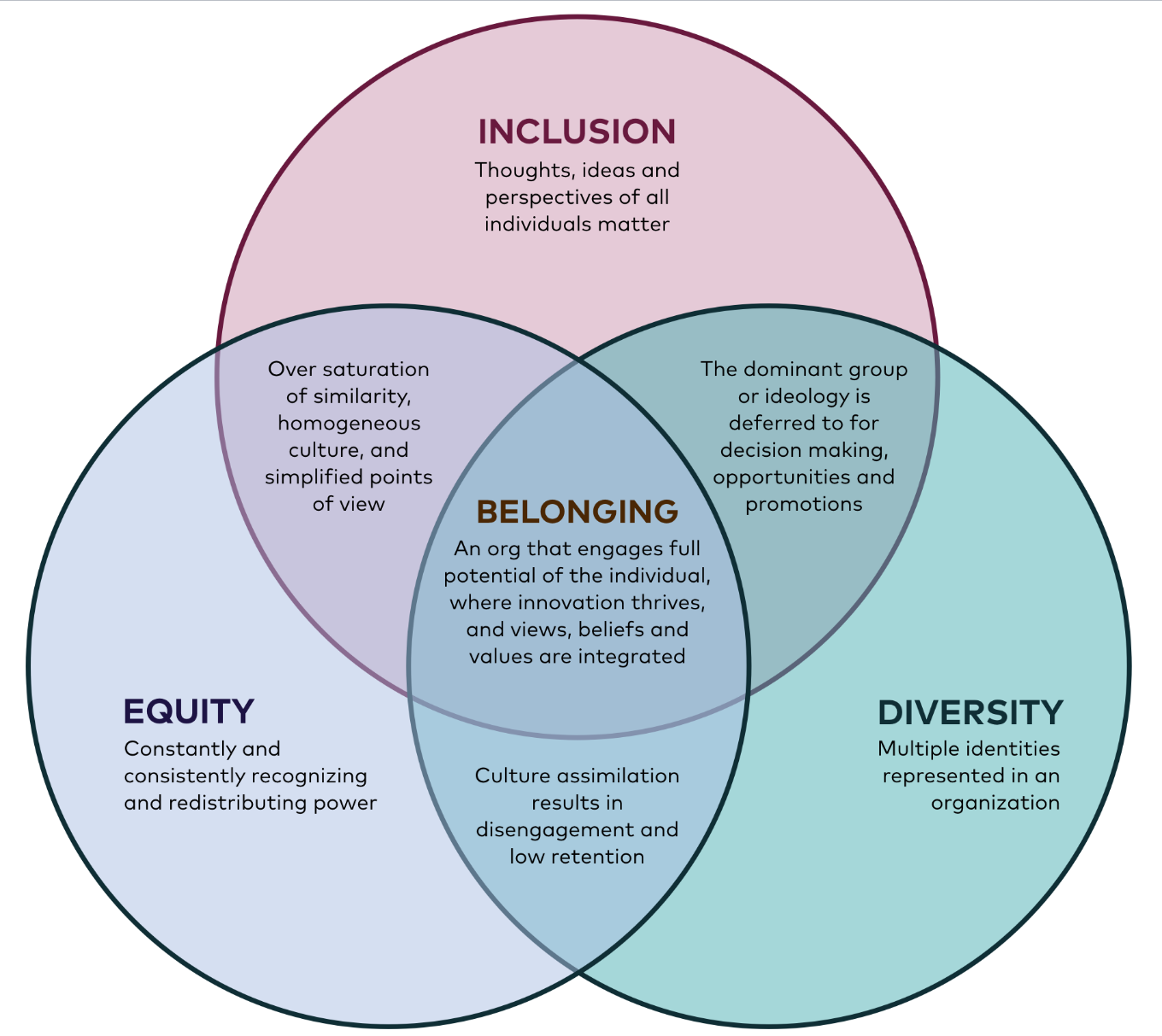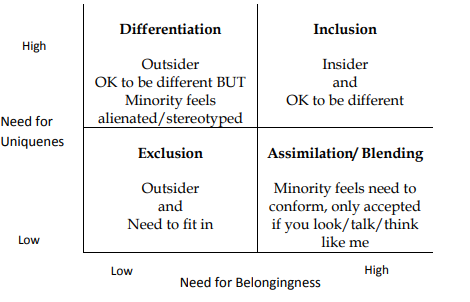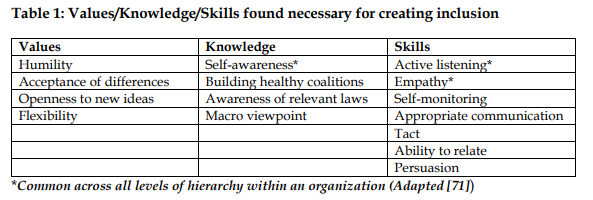Equity, Diversity, and Inclusion
By M Gayatri Devi Namala
Keywords: Equity, Diversity, Discrimination, Inclusion, Unconscious bios
- What is Equity, Diversity, and Inclusion how these are affecting the structure of our society and how they play a significant role in the development and infrastructure of a country
Equity, diversity, and inclusion are complex interlinked and interchangeable words with various definitions in EDI, depending on the group or community (Fig1). As we all know, every person is unique with their respective age, gender, colour, and different people experience education differently depending on life experiences, age, culture, and depending on resources available to them. The concept of equity is to provide a safe learning environment along with an excellent curriculum and pedagogy (Fig2) (1). To achieve equity in the STEM field, educators must provide awareness strategies, tools needed for students, which will create an equitable environment for all people without discrimination (2).
As we all know that Diversity always has two factors
1) Composition of group
2) Demographic differences.
The more diversified workgroup gives mixed attributes within a group in so many ways. From the past, so many decades, every country in the world is working towards Equity, Diversity, and inclusions. This means they are providing equal opportunities to everyone and treating everyone equally because it’s essential to create a community where all people feel valued, regardless of race, colour, religion, sex, gender, sexual orientation, national origin, disability, age. (3).
Fig 1: Equity, Diversity, and inclusion have the power to shape the community for better wellbeing. (This Picture was adapted from -link- https://shawneemissionpost.com/event/diversity-equity-inclusion-building-a-stronger-community)
Fig 2: The three terms Equity, Diversity, and inclusion are interlinked and complex, with different definitions. (Pic adopted from following link –https://medium.com/@krysburnette/its-2019-and-we-are-still-talking-about-equity-diversity-and-inclusion-dd00c9a66113)
- Why it matters??? Why must we treat people equally?? Is it necessary???
Unfortunately, systemic and persistent forms of discrimination have created a substantial unconscious bias, which in turn affects the productivity of an organization or workgroup. Every country recognized the importance of diversity and inclusion and took necessary steps towards it. In 1985 Canada passed an act called the Canadian multiculturism act, which provides every induvial equal protection and benefits without discrimination (11). In 1964 the US government passed a bill the Civil Rights Act of 1964 to provide equal opportunities to all the races and genders. Just one year earlier, the US government also approved The Equal Pay Act of 1963, which gives fair labour standards and gives equal pay to women (4). On another side of the globe in India, the Indian Constitution also prohibits discrimination on the grounds of religion, race, caste, sex. India has laws to protect women from sexual harassment and providing maternity benefits, equal pay as men. However, Indian women in education are 64% according to 2018, but women in the employment sector are only 27% and while men are 79%.
- 3. Why is Diverse workgroup critical?
In one level, diverse workgroup helps to attract different communities which allow the growth of economic status. A survey in the United States says that racial diversity and Gender diversity are associated with increased sales. Moreover, the Diverse workgroups offer more creativity, innovation, and organizational adaptability; They also come with a tremendous problem-solving nature. However, the employees should feel that he /She belong to group means they should include in that group. The employee should be treated fairly with respect and make them feel that their uniqueness is appreciated, and they belong to the group. Being valued and feeling a sense of belongingness is the main element of inclusion. Inclusion also focusing on the social experiences and feelings of accepted and treated as an insider in the workplace as we all know, people always want to feel belonging while maintaining their diversity (race, religion, etc.). In the workplace, people can feel exclusion or inclusion, depending on the degree of belongingness they experienced (fig 3) (9). People’s elimination always carries adverse psychological and behavioural outcomes from individuals within a group or in an organization in the long run. On the other hand, Inclusive environments are proven to influence people willing to go beyond their job-related roles, which further help them in performing way better in a group activity and also give job satisfaction, intention to stay. In one statement, Inclusiveness helps to improve job performance, creativity and enhanced career opportunities for everyone in that group. (8,9,10)
Fig 3: Conceptualization of exclusion-inclusion based on uniqueness and belongingness. This Picture was adopted from “Diversity and Inclusion at the Workplace: A Review of Research and Perspectives” by Nisha Nair and Neharika Vohra.
A multicultural, inclusive organization or group is one with the diversified knowledge and perspectives that shape the group or organization as the best workforce. The leadership of organizations plays an essential role in creating and supporting inclusion within the group. However, every person should have specific values and skills necessary for creating inclusion in the workplace. (Fig4) (9). In one-way inclusive leadership can be viewed as antecedents of inclusion.
Fig 4: Values/Knowledge/skills necessary for creating inclusion. (this information is adopted from -Link-Skills for diversity and inclusion in organizations: A review and preliminary investigation,” The Psychologist-Manager Journal, vol. 15.)
4. References
- https://medium.com/@krysburnette/its-2019-and-we-are-still-talking-about-equity-diversity-and-inclusion-dd00c9a66113
- https://www.cae.com/careers/diversity-inclusion/
- https://en.wikipedia.org/wiki/Equal_Pay_Act_of_1963
- https://cdn-media.leanin.org/wp-content/uploads/2015/03/19212949/Tug-of-War.pdf
- https://timesofindia.indiatimes.com/india/pass-long-pending-women-reservation-bill-demand-women-organisations/articleshow/64980701.cms
- https://women-s.net/womens-education-in-india/
- https://www.smefutures.com/women-stem-fields-indian-perspective/
- https://stemequityinitiative.org/educational-equity
- https://pdfs.semanticscholar.org/e46b/01026f8859fa16a918cfb69590f2e955a052.pdf
Diversity and Inclusion at the Workplace: A Review of Research and Perspectives Nisha Nair Neharika Vohra W.P. No. 2015-03-34 March 2015.





